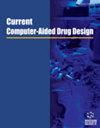大西洋黄连木的奎宁酸和双二食酸。叶提取物对SARS-CoV-2主要蛋白酶和RNA依赖性RNA聚合酶的有效双效抑制剂
IF 1.6
4区 医学
Q4 CHEMISTRY, MEDICINAL
引用次数: 1
摘要
本研究利用UHPLC-DAD-ESI-MSn实现了黄连木的化学成分分析,可以检测到不同的酚类化合物基团。叶提取物。我们通过分子对接研究了鉴定的分子对SARS-CoV-2主要蛋白酶CL3 Mpro和RNA依赖性RNA聚合酶RdRp的抑制作用。目的对大西洋黄连木中的化合物进行鉴定。叶子提取物,可能有抗病毒作用。方法利用UHPLC-DAD-ESI-MSn实现SARS-CoV-2的化学组成,利用Autodock Vina软件进行分子对接,研究其对主要蛋白酶(CL3 Mpro)和RNA依赖性RNA聚合酶(RdRp)的抑制作用。进行ADMET分析。结果鉴定出的化合物为奎宁酸、二没食子酸、没食子酸、三食子酸、二烯丙基奎宁酸、三烯丙基奎宁酸和没食子酸甲酯;二羟基酸和奎宁酸是最好的抑制剂。二食子酸的结合亲和能(BAE)为-8.2 kcal/mol, CL3 Mpro的Ki为1µM, RdRp的Ki为0.62 mM。两种酶的奎宁酸Ki值均为4.6 mM。通过ADMET分析,我们发现这两个分子都是很好的候选药物。结论这是首次从大西洋黄连木中分离到一组化合物。叶片通过抑制其生命周期中的两个关键酶来研究其对新型病毒的潜在活性,但在此背景下没有进一步的研究发表。本文章由计算机程序翻译,如有差异,请以英文原文为准。
Quinic and digallic acids from Pistacia atlantica Desf. leaves extracts as potent dual effect inhibitors against main protease and RNA-dependent RNA polymerase of SARS-CoV-2.
BACKGROUND
Through this study, the Chemical composition realized by UHPLC-DAD-ESI-MSn allowed the detection of different phenolic compounds groups from Pistacia atlantica Desf. leaves extracts. We studied the inhibition of main protease (CL3 Mpro) and RNA-dependent RNA polymerase (RdRp) of the SARS-CoV-2 by the identified molecules through molecular docking.
OBJECTIVE
The objective of this study is to identify compounds from Pistacia atlantica Desf. leaves extracts, which might have anti-viral effects.
METHODS
Chemical composition realized by UHPLC-DAD-ESI-MSn, the inhibition of main protease (CL3 Mpro) and RNA-dependent RNA polymerase (RdRp) of the SARS-CoV-2 is studied using molecular docking with Autodock Vina software. ADMET analysis was carried out.
RESULTS
The identified compounds are quinic acid, digallic acid, galloylquinic acid, gallic acid, trigallic acid, digalloylquinic acids, trigalloylquinic acids and methyl gallate; digallic and quinic acids are the best inhibitors. Digallic acid had binding affinity energy (BAE) of -8.2 kcal/mol, and Ki of 1µM for the CL3 Mpro, Ki of 0.62 mM for the RdRp. Quinic acid showed Ki of 4.6 mM, recorded for both enzymes. Through ADMET analysis, we have found that the two molecules are good drugs candidate.
CONCLUSION
This is the first time that a group of identified compounds from Pistacia atlantica Desf. leaves is studied for their potential activity against the novel virus by inhibiting two key enzymes in its life cycle, and no further studies have been published in this context.
求助全文
通过发布文献求助,成功后即可免费获取论文全文。
去求助
来源期刊

Current computer-aided drug design
医学-计算机:跨学科应用
CiteScore
3.70
自引率
5.90%
发文量
46
审稿时长
>12 weeks
期刊介绍:
Aims & Scope
Current Computer-Aided Drug Design aims to publish all the latest developments in drug design based on computational techniques. The field of computer-aided drug design has had extensive impact in the area of drug design.
Current Computer-Aided Drug Design is an essential journal for all medicinal chemists who wish to be kept informed and up-to-date with all the latest and important developments in computer-aided methodologies and their applications in drug discovery. Each issue contains a series of timely, in-depth reviews, original research articles and letter articles written by leaders in the field, covering a range of computational techniques for drug design, screening, ADME studies, theoretical chemistry; computational chemistry; computer and molecular graphics; molecular modeling; protein engineering; drug design; expert systems; general structure-property relationships; molecular dynamics; chemical database development and usage etc., providing excellent rationales for drug development.
 求助内容:
求助内容: 应助结果提醒方式:
应助结果提醒方式:


